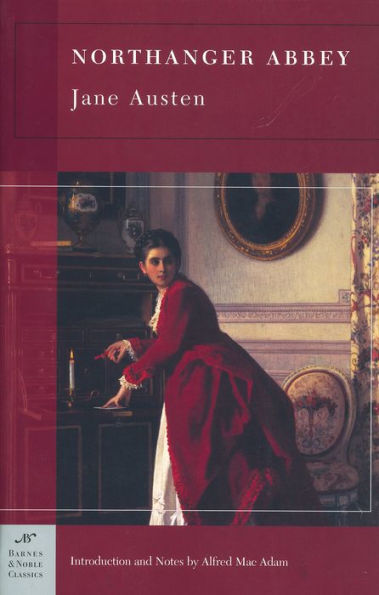Read an Excerpt
From Alfred Mac Adam’s Introduction to Northanger Abbey
Austen writes at the outset of a total metamorphosis of European thought, a moment when every aspect of society was on the verge of mutation. The most obvious change is political: France enters the process of the French Revolution in 1789 and moves into the era of Napoleon, from which it emerges only after Napoleon’s defeat at Waterloo in 1815. France, in only a few years, moves from monarchy to republic to empire and back to monarchy. The spirit of the eighteenth-century Age of Reason, with its emphasis on universal principles (such as “All men are created equal”) turns into the age of Romanticism, when individuals discover they are radically different from one another.
Austen’s sociology too reflects an evolving literary, political, and social reality. Her main characters are not nobles, though some may be members of the titled aristocracy. Catherine Morland is the daughter of a country clergyman; she’s seen nothing of the world until her visit to Bath, a health spa and meeting place for marriageable young men and women, and her subsequent brush with provincial highlife at the grand estate of General Tilney, the father of the clergyman she eventually marries. The novel, as Austen and her contemporaries conceive it, is not concerned with kings and queens but with ordinary people, and one wonders if she had any knowledge of Madame de Lafayette’s The Princess of Cleves (1678), an early transformation of the aristocratic and courtly setting of the romance of chivalry into something very much like the psychological novel. The novel’s task is to make ordinary, usually middle-class characters interesting by creating predicaments for them in circumstances its readers would find reasonably familiar. Austen has a strong cohort of women novelists among her contemporaries who did exactly that; she refers specifically to Cecilia; Or, Memoirs of an Heiress (1782) and Camilla; Or, a Picture of Youth (1796), by Fanny Burney, as well as Belinda (1801), by Maria Edgeworth: The fact that these novels are all named after their heroines certainly influenced Austen, who in its earlier incarnations gave Northanger Abbey the title “Susan” and then “Catherine.”
Again, none of us (we hope!) has ever seen a vampire, a werewolf, or a ghost, though these are standard items in the gothic novel. But many of Austen’s readers would know the tribulations of finding suitable mates and the disasters that beset young people as they try to get on with life. Austen’s England is alien territory insofar as her twenty-first-century readers are concerned, especially its class structure. Marriage, for example, while it could be the happy union of two people who cared for each other, was in Austen’s day really a union of fortunes; in the same way, becoming a clergyman did not necessarily reflect religious fervor: It was a profession like any other. In Northanger Abbey, we see the impoverished Isabella Thorpe desperately trying to find a man who will be able to maintain her in upper-class style, becoming engaged to one (Catherine Morland’s brother James), and instantly throwing him over when a better candidate (Captain Frederick Tilney) appears.
Little does she know that Frederick, a flirtatious rogue and therefore Isabella’s male twin, is simply toying with her, so breaking off with James Morland ultimately leads her to disaster. But James’s parents are relieved when the engagement collapses, because, as Catherine’s mother explains to her in the most precise terms, Isabella Thorpe has no money. The same argument—poor people are not suitable as mates—almost destroys Catherine’s chances of marrying Henry Tilney. Only because his daughter marries into the nobility (a viscount), does General Tilney allow his second son (who will not, because of the laws of primogeniture, inherit his estates) to marry the daughter of a country parson with ten children.
This is what Austen considers the material of novelistic lives: how members of contemporary English society confront the issues of the day and either overcome them (Catherine Morland and Henry Tilney eventually marry) or succumb to them (by the end of the novel, Isabella Thorpe finds herself virtually destitute and without either a fiancé or a wealthy prospect). Because Austen is writing with a comic view of society, her protagonist, Catherine Morland, will triumph, even if this means her author must resort to a deus ex machina to extricate her from her dilemma: General Tilney is so happy his daughter has married a viscount that he decides his second son’s choice of a poor bride is of little importance.
Money, then, is the great variable and the controlling factor in the lives of Austen’s characters, especially her women, because without it they are, in social terms, worthless. This was as true in real life as it was in fiction: Jane Austen fell in love with Tom Lefroy in 1796, but, since she was virtually penniless and her beau an impoverished Irish barrister-to-be, marriage was out of the question, a reality she accepted. That people did fall in love, run away, and live happily ever after was certainly possible in Austen’s day, but such relationships were the exception rather than the rule.


